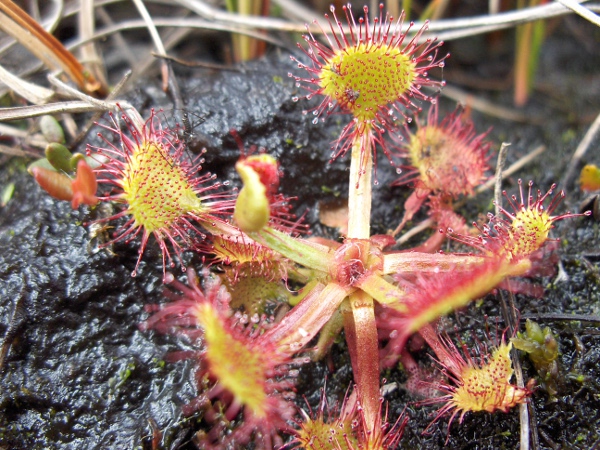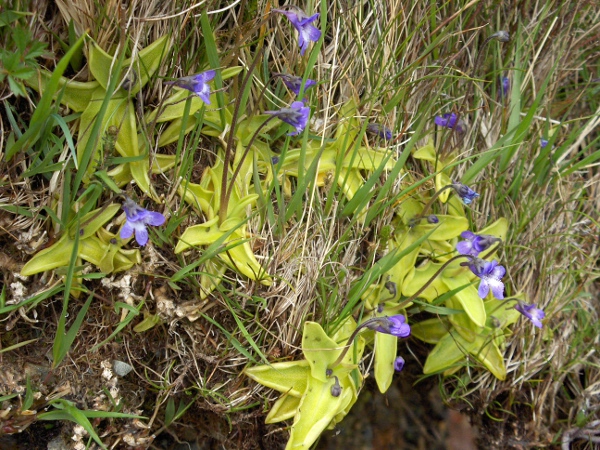
Carnivorous plants
Four types of carnivorous plants in three families occur in the British Isles, each using a different method to trap small animals before digesting them. The nutrients from the animals help these plants to live in very nutrient-poor environments, such as peat bogs and oligotrophic marshes.
- Drosera rotundifolia L. – round-leaved sundew
- Drosera anglica Huds. – great sundew
- Drosera intermedia Hayne – oblong-leaved sundew
- Sarracenia flava L. – yellow pitcherplant
- Sarracenia purpurea L. – purple pitcherplant
- Pinguicula lusitanica L. – pale butterwort
- Pinguicula alpina L. – Alpine butterwort
- Pinguicula vulgaris L. – common butterwort
- Pinguicula grandiflora Lam. – large-flowered butterwort
- Utricularia vulgaris L. – greater bladderwort
- Utricularia australis R. Br. – bladderwort
- Utricularia intermedia Hayne – intermediate bladderwort
- Utricularia stygia G. Thor – Nordic bladderwort
- Utricularia ochroleuca R. W. Hartm. – pale bladderwort
- Utricularia minor L. – lesser bladderwort
- Utricularia bremii Heer ex Koell. – New Forest bladderwort

Sundews such as Drosera rotundifolia use the sticky hairs on their leaves to catch insects, and curl the leaves up to trap their prey.

The exotic pitcherplant, Sarracenia purpurea, lures insects into its slippery-sided traps (modified leaf-tips) and drowns its prey in water at their bases.

Butterworts such as Pinguicula vulgaris trap insects on their sticky leaves.

Bladderworts such as Utricularia vulgaris trap small aquatic animals in bladder-traps on their submerged leaves.

